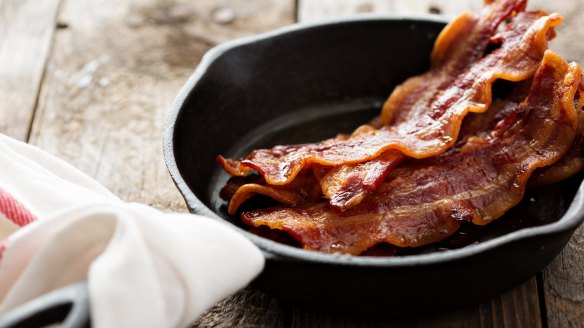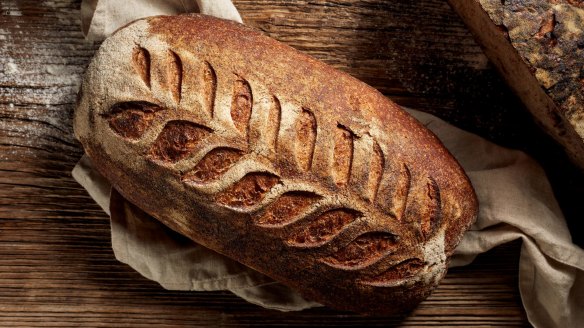How to make crispy bacon

Why doesn't my bacon crisp? P. Lim
Because the companies that make a lot of bacon are greedy and pump your bacon full of water. That water costs them virtually nothing but they charge you for it in the price per kilogram of bacon. Traditional bacon can take weeks to make, the pork bellies or back cuts sitting in brine slowly absorbing the salty solution. Modern bacon is injected with brine then tumbled, sometimes under vacuum, to evenly distribute the brine. Apart from salt, sugar and preservative, some manufacturers use sodium triphosphate (E451). This helps muscle retain water. The chicken industry also uses it to make their chickens heavier. When the bacon is fried, the water is expelled and you end up with water pooling around the bacon in the pan, steaming it, but also sitting in folds in the flesh. For crisp bacon, try one of these methods. Place rashers evenly on a baking tray and place in an oven set at 200C. For extra crispness, place the rashers on a cooling rack over a tray. Otherwise, spread the rashers evenly in a large cold frying pan greased with a little oil or fat. Place over medium heat, turning rashers occasionally. Spoon off excess water if there is any. The idea is to slowly render some of the fat from the bacon, in which it will fry, not boil. I buy my bacon from Salt Kitchen, a small producer that doesn't pump its smallgoods full of brine.
I started using stoneground flour to make bread because it is healthier but now my bread is not rising as it did. L. Morrison

I am considering developing a tantric bread-making course in which every stroke of the knead and caress while shaping the loaf is slowed right down. Stoneground flour is perfect for slow bread-making. You see, it is made by grinding wheat between two heavy stone discs. The runner stone moves on top of the groundstone and the resulting flour contains the fatty germ and the fibrous bran. It is also quite a gentle way of milling compared with modern roller mills, which create more starch damage. Starch damage sounds like a bad thing but it simply means the starch is broken into smaller particles. During fermentation a flour with high starch damage, say, from a modern roller mill, will have more broken particles of starch for the enzymes to break apart into sugars to feed the yeast. In low starch-damaged stoneground flour, the yeast and enzymes have to work harder and longer to break up the starch to ferment into carbon dioxide and alcohol, which makes bread rise. Stoneground flour is not great for short ferments but perfect for long, slow bulk ferments. So consider slowing your fermenting process right down by bulk-fermenting your stoneground dough in the fridge overnight or switch to using a sourdough starter to make bread, a naturally long process that can take 12 to 48 hours.
Send your vexing culinary conundrums to brainfood@richardcornish.com.au or tweet to @realbrainfood.
Brain Food by Richard Cornish is out now from MUP (RRP $19.99, eBook $11.99)
Appears in these collections
- More:
- Food
- Brain food
